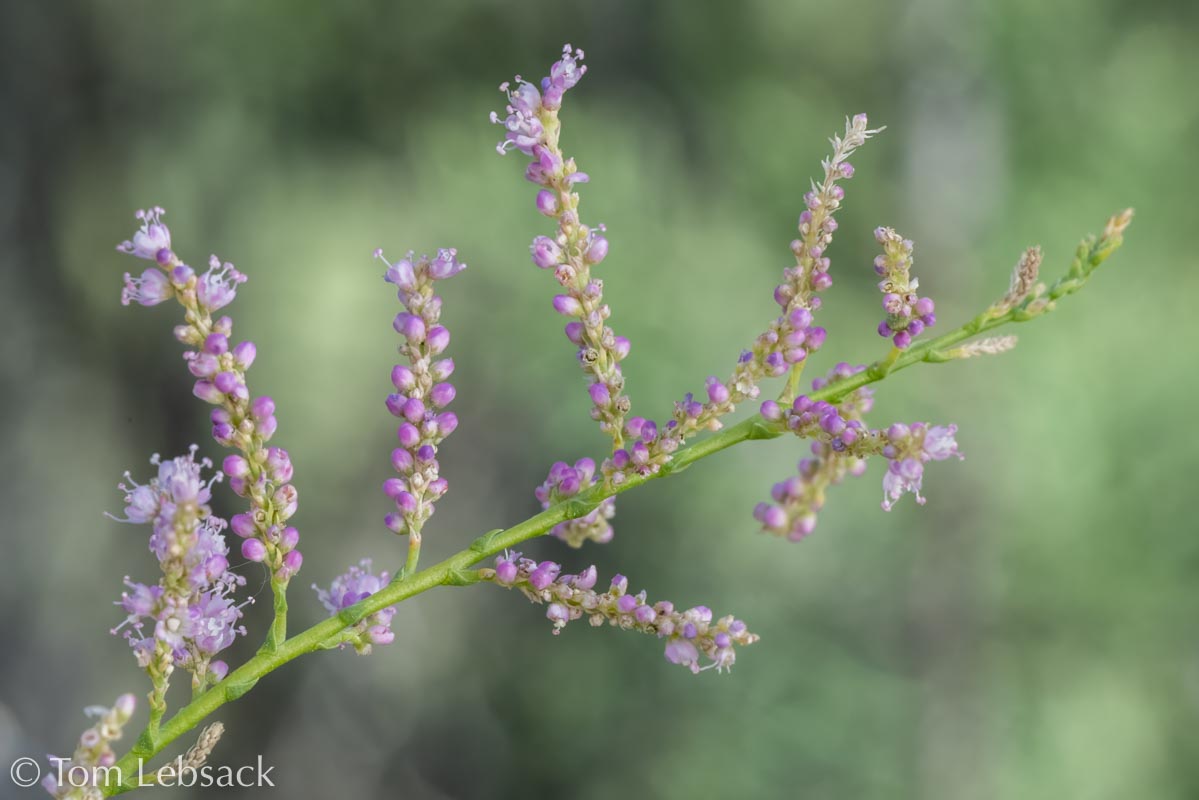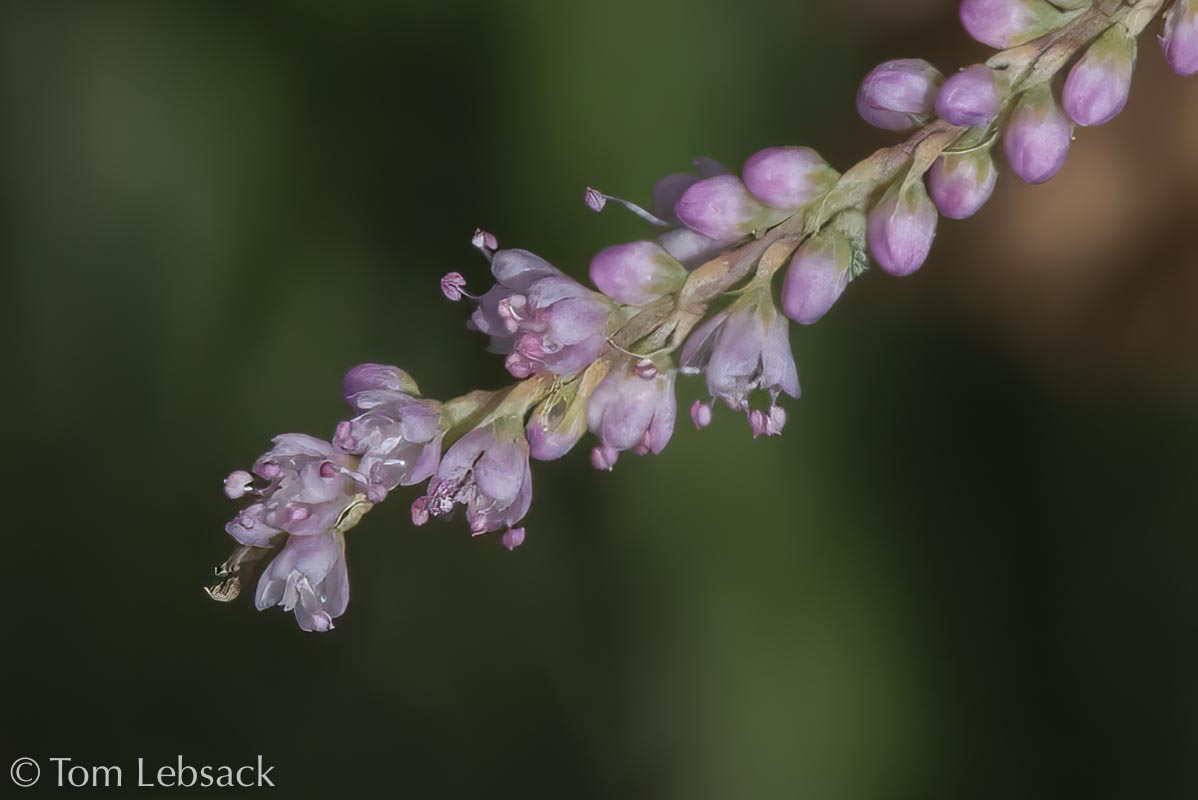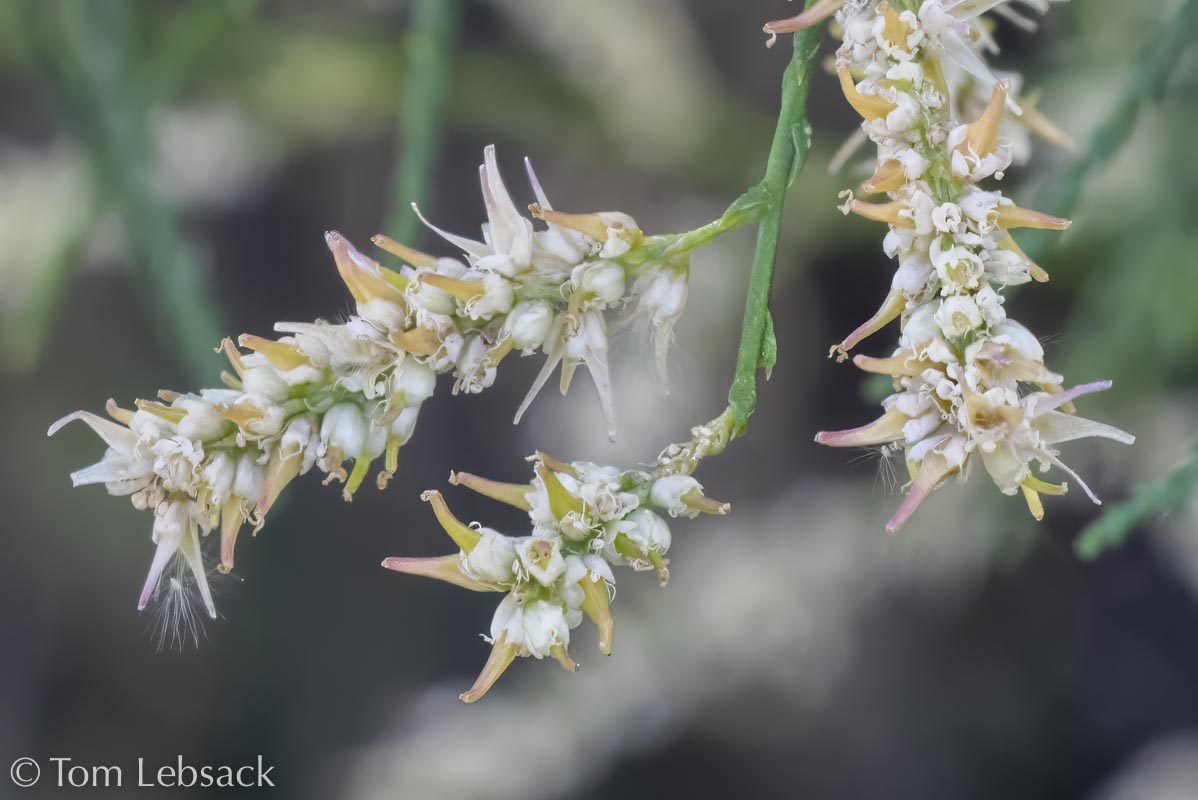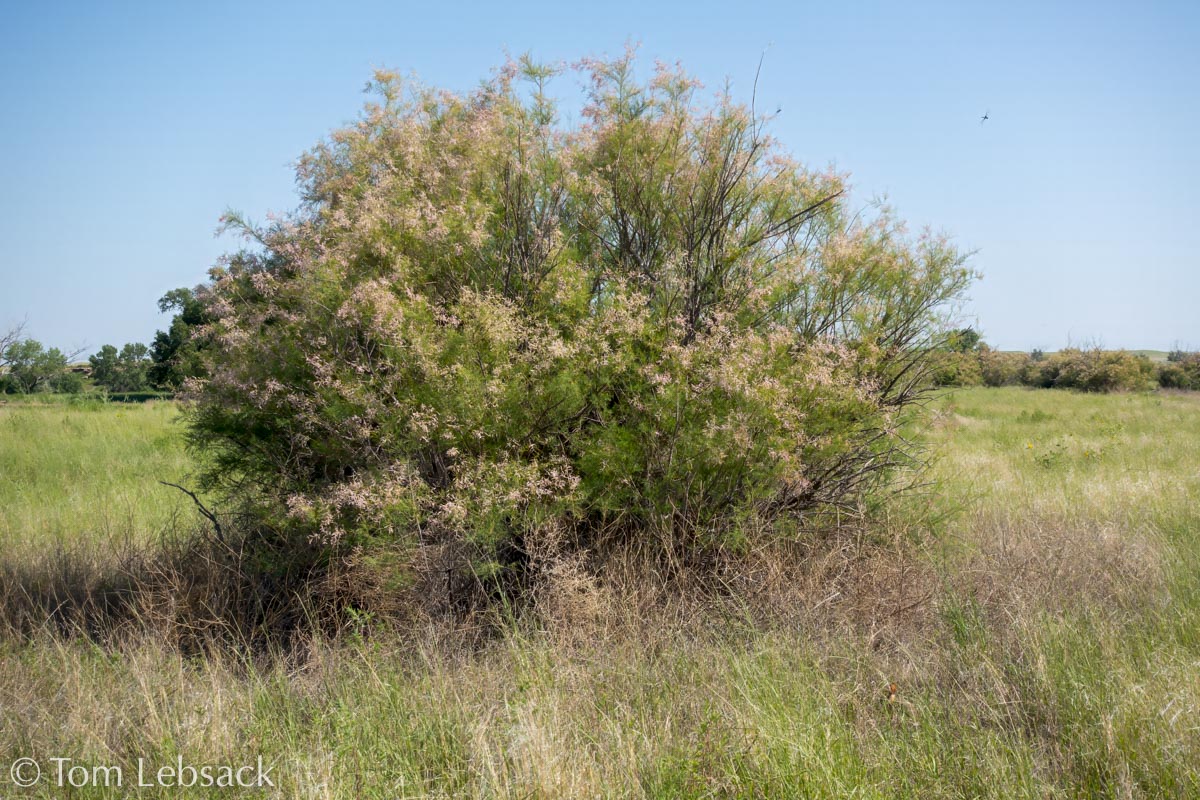Tamarix chinensis
(Salt-cedar)
| Scientific Name | Tamarix chinesis (Tamarix ramosissima) | USDA PLANTS Symbol | TACH2 |
| Common Name | Salt Cedar | ITIS Taxonomic Serial No. | 22308 |
| Family | Tamaricaceae (Tamarix) | SEINet Reference |
Click Here |
| Description | Life zones and habitat: Planis and foothills (3500 to 7500 ft.); sandy soils along streams, areas near lakes and reservoirs, salt flats and waste areas. Introduced from Eurasia; very invasive. Plant: Spreading deciduous shrubs or small trees, up to 26 ft. tall, but usually half that; numerous slender, spreading branches; younger branches are reddish in color, older bark is brown. Leaves: Small, scale-like blades, alternate, triangular-ovate or lanceolate, 1/8-inch long or less, sessile. Inflorescence: Small, pale pink to white flowers arranged in spike-like racemes 3/4 to 2-3/4 inches long; flowers with 5 very small petals about 1/16-inch long or less and 5 sepals. Bloom Period: May to August. References: "Flora of Colorado" by Jennifer Ackerfield, Texas Invasives, "Manual of the Vascular Plants of Texas" by Correll and Johnston and SEINet. Note: Some authorities consider T. ramosissimus to be synomynous with T chinensis. From the literature, one obvious difference is that the bark of the former is reddish-brown and the latter, brown to blackish-purple. |
BONAP Distribution Map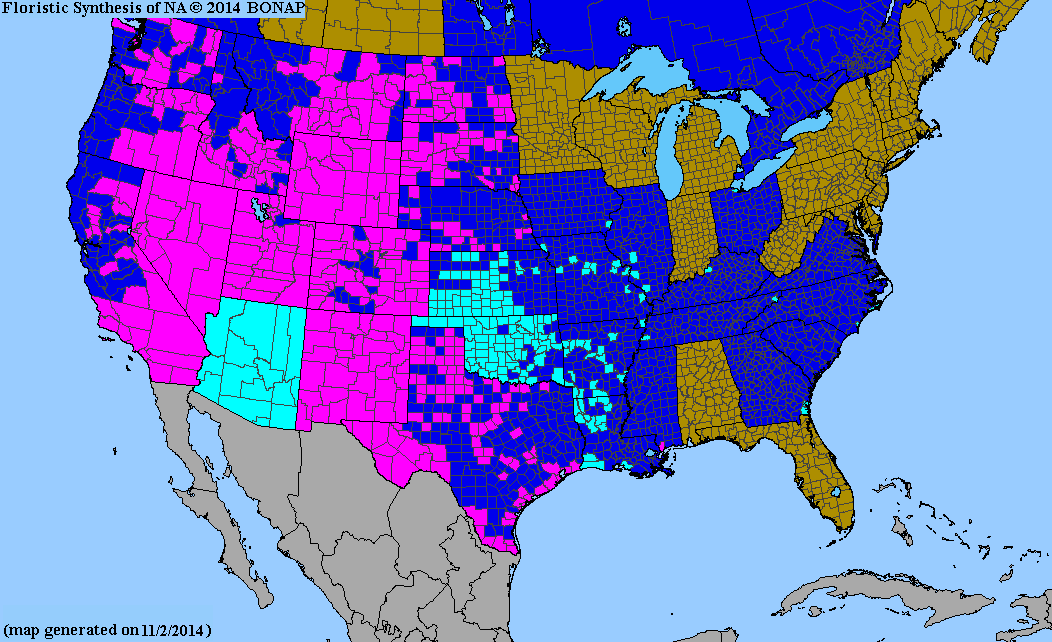 Map Color Key | Colorado Status: Introduced INVASIVE |
© Tom Lebsack 2025
Banner photo: Castilleja rhexifolia and a brewing storm over the San Juan Mountains
I try to provide accurate, up-to-date, and relevant information, but cannot guarantee the completeness or accuracy of any information presented on this website. I use authoritative references to insure high standards of accuracy and review and update the information frequently.
